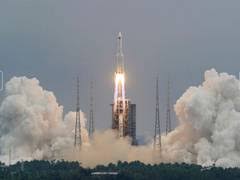Kenya’s first operational observational satellite, Taifa-1, was finally launched into space on Saturday after three unsuccessful attempts. The launch occurred at the United States Vandenberg Base in California aboard a Falcon-9 rocket owned by Elon Musk’s Space X company.
Taifa-1’s launch was initially meant to take place on Tuesday, April 11, before being rescheduled to Friday, April 14, due to unbalanced weather conditions. The weather conditions did not improve by Friday, so the launch was postponed 28 seconds before lift-off and pushed to Saturday, April 15, at 9:44 am.
The satellite was built by a team of nine Kenya Space Agency (KSA) engineers, costing Ksh.50 million. (about $380,000). The team collaborated with Endurosat AD, a Bulgarian aerospace manufacturer that supplied components of the satellite’s body.

The observation satellite is “fully designed and developed” by Kenyan engineers and will be used to provide data on agriculture and food security, among other areas, a statement from the defence ministry and the Kenya Space Agency said.
“The mission is an important milestone,” the statement said, adding that it would contribute significantly to the country’s “budding space economy”.
An East African economic powerhouse, Kenya is suffering its worst drought in decades after five failed rain seasons.
The satellite launch adds to a push by African nations for scientific innovation and the development of space programmes.
The Taifa 1 Mission
Taifa-1 Sat is Kenya’s first operational earth observation satellite. It is equipped with an optical camera that takes pictures simultaneously in multispectral and panchromatic modes enabling it to operate within and beyond the visible light spectrum.
The satellite is the first of what is intended to be a constellation of small earth observation satellites, with subsequent systems expected to be of higher capability. observation satellites, with subsequent systems expected to be of higher capability.

